FORT GEORGE G. MEADE, Md. (AFNS) -- Hurricane Michael hit the Florida Panhandle as a Category 4 hurricane Oct. 10, with Tyndall Air Force Base directly in its path. Active-duty and National Guard service members were pre-positioned to provide assistance during the storm. And within hours after the hurricane ended, additional Airmen began arriving from across the country to assess the damage, clear the path for first responders, begin to repair the base and provide humanitarian assistance to the area.
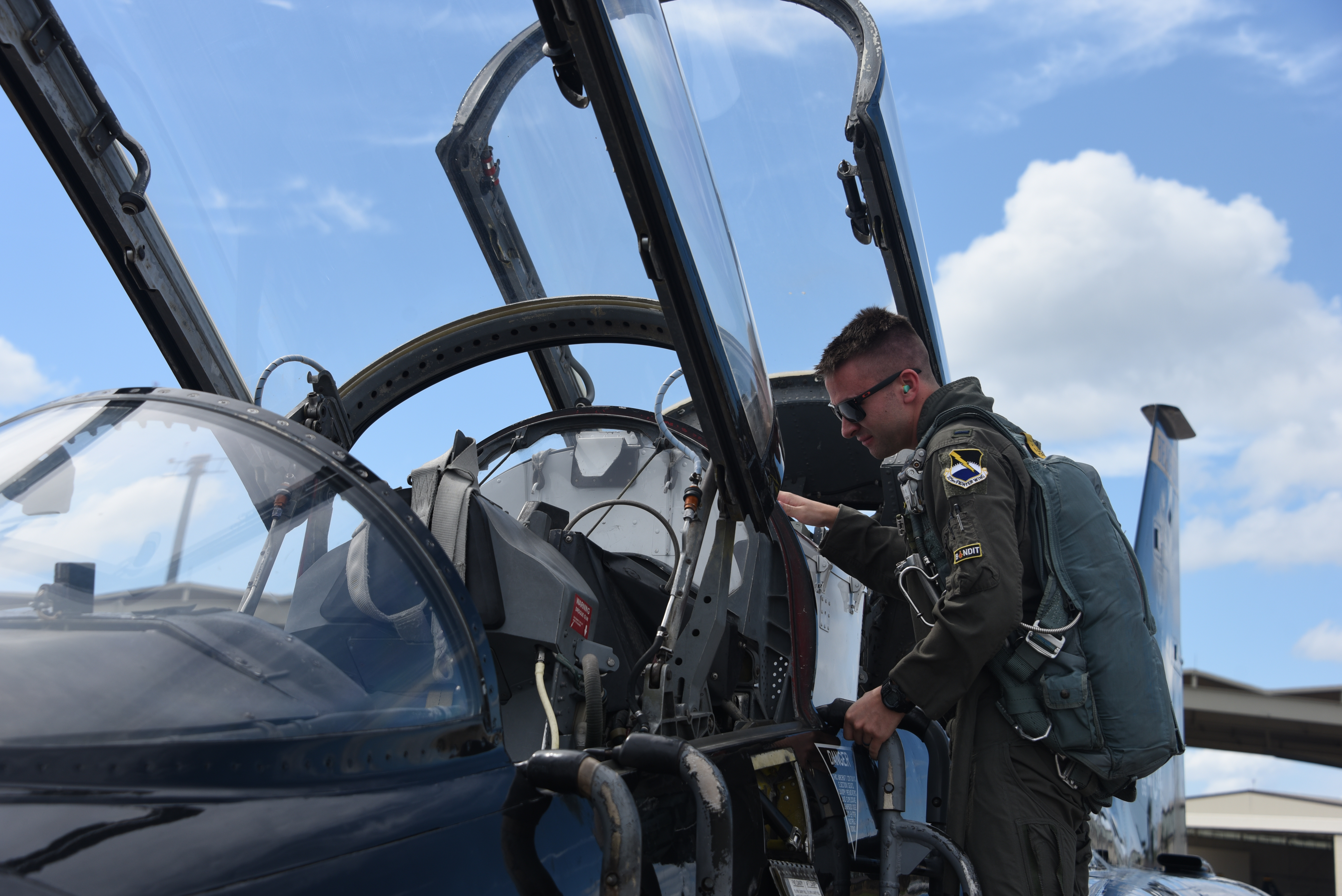
(U.S. Air Force photo by Airman 1st Class Solomon Cook)
Tyndall AFB evacuated assets to avoid the path of Hurricane Michael, Oct. 8, 2018. The aircraft repositioned to Wright-Patterson AFB, Ohio, and other locations around the country.
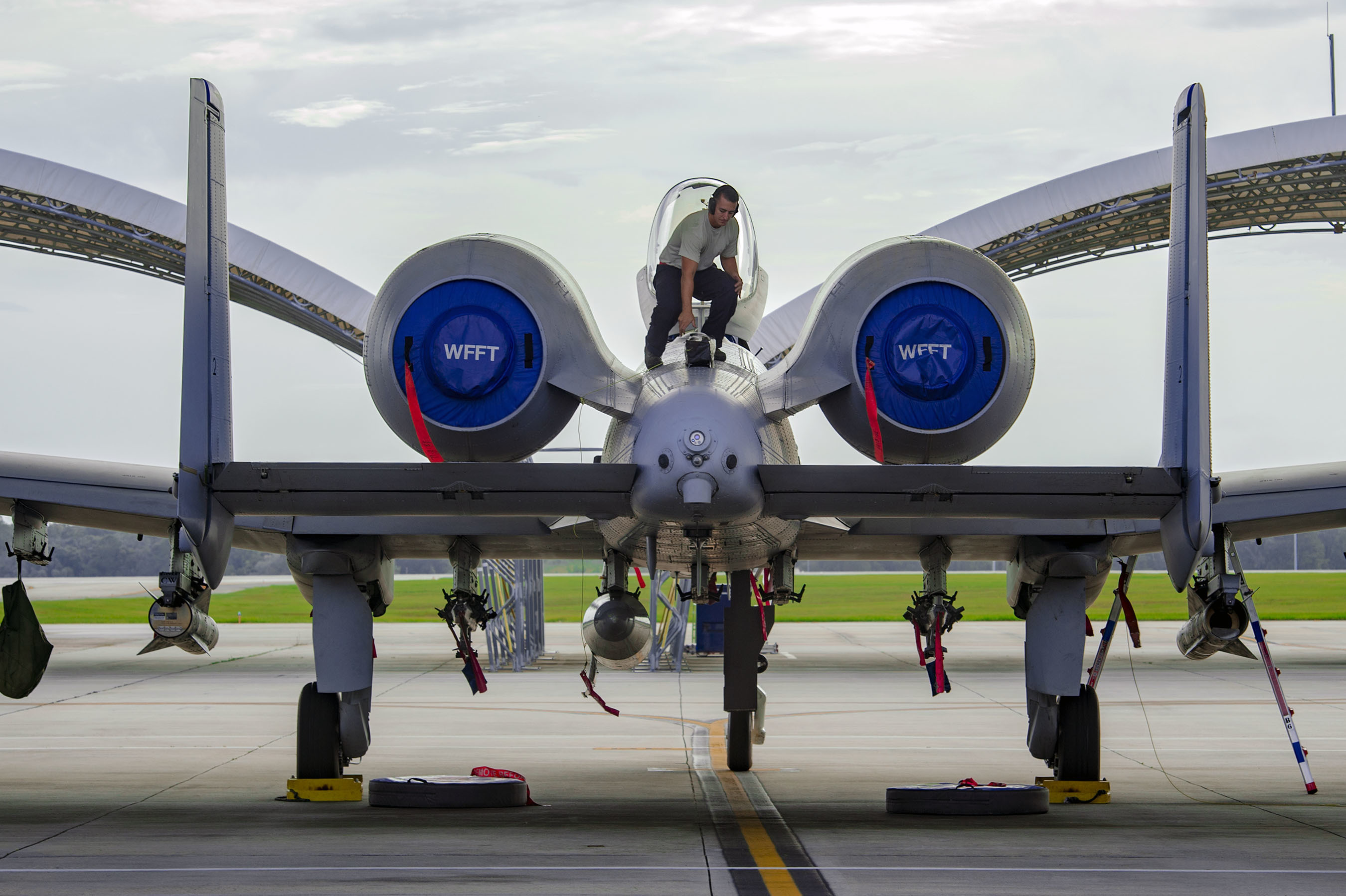
(U.S. Air Force photo by Senior Airman Greg Nash)
To safeguard flying assets, Moody AFB, Georgia, repositioned some aircraft to avoid the predicted tropical-storm-force winds in the Southeast region.
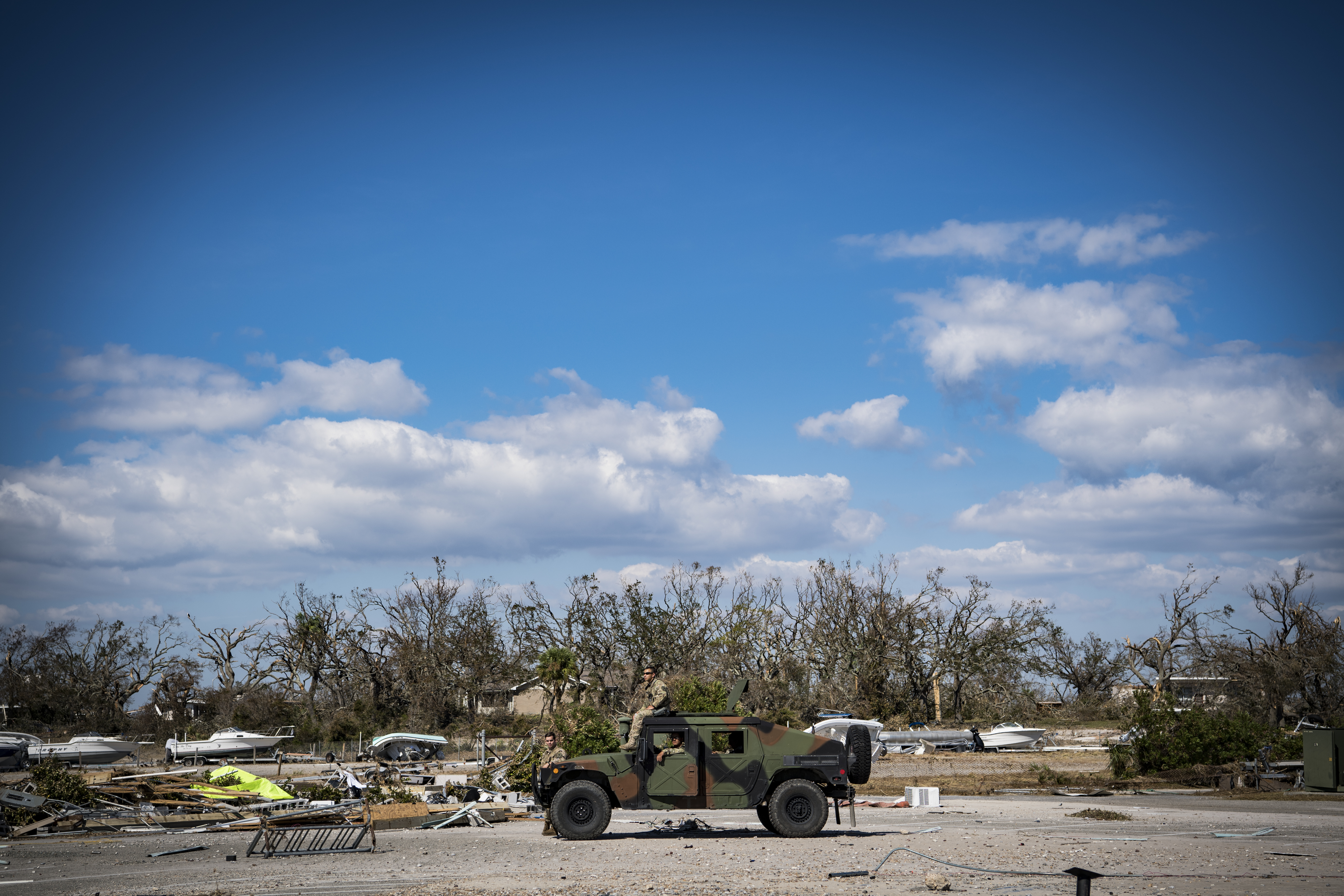
(U.S. Air Force photo by Senior Airman Keifer Bowes)
While active-duty and National Guard service members were pre-positioned to provide assistance during the storm, within hours after it ended additional Airmen began arriving from across the country to assess the damage.
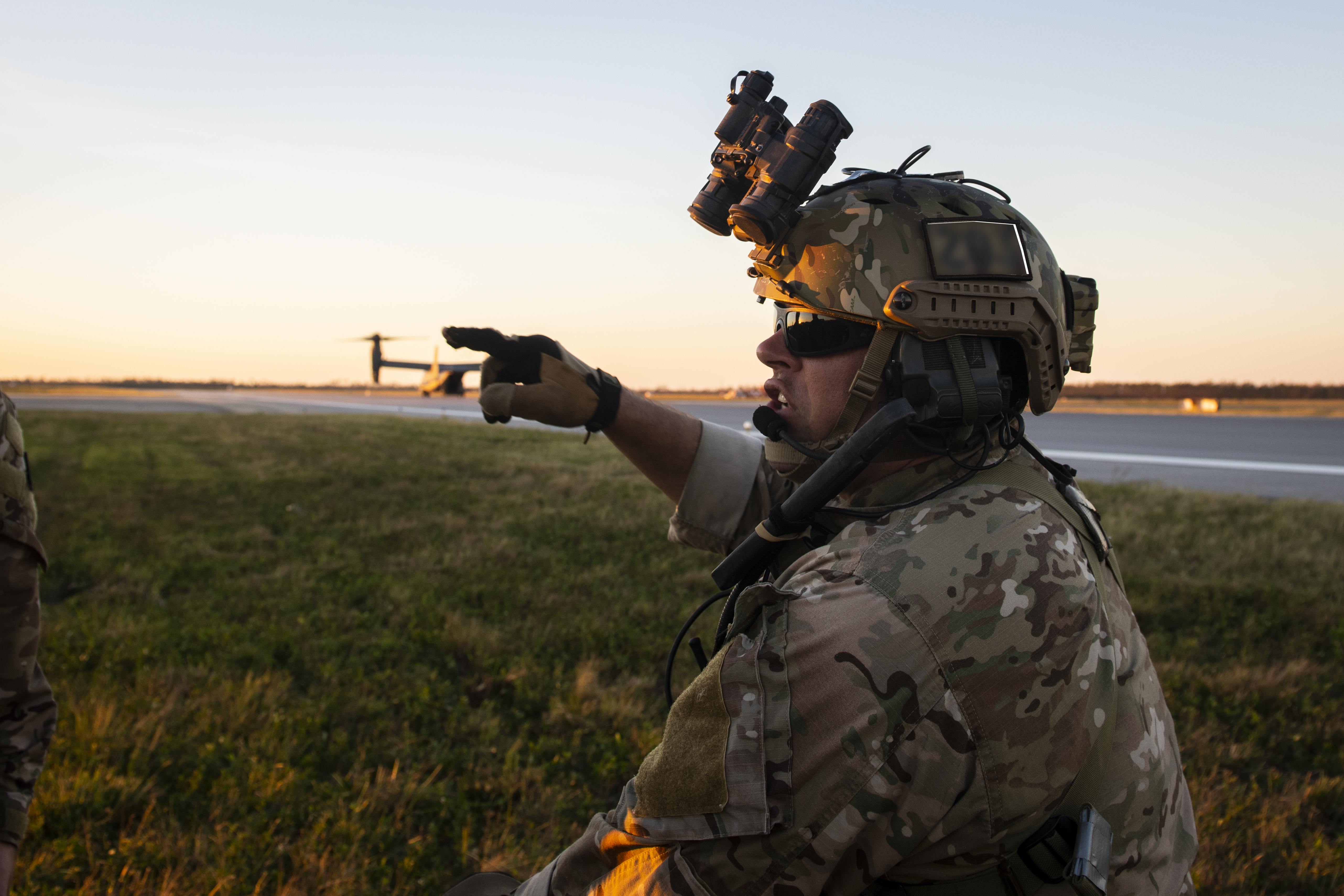
(U.S. Air Force photo by Senior Airman Joseph Pick)
Special tactics Airmen from Air Force Special Operations Command re-opened Tyndall AFB’s airfield within a day after the storm. Special Tactics teams can assess, open and control all types of airfields, from major airports to clandestine dirt strips in any environment.
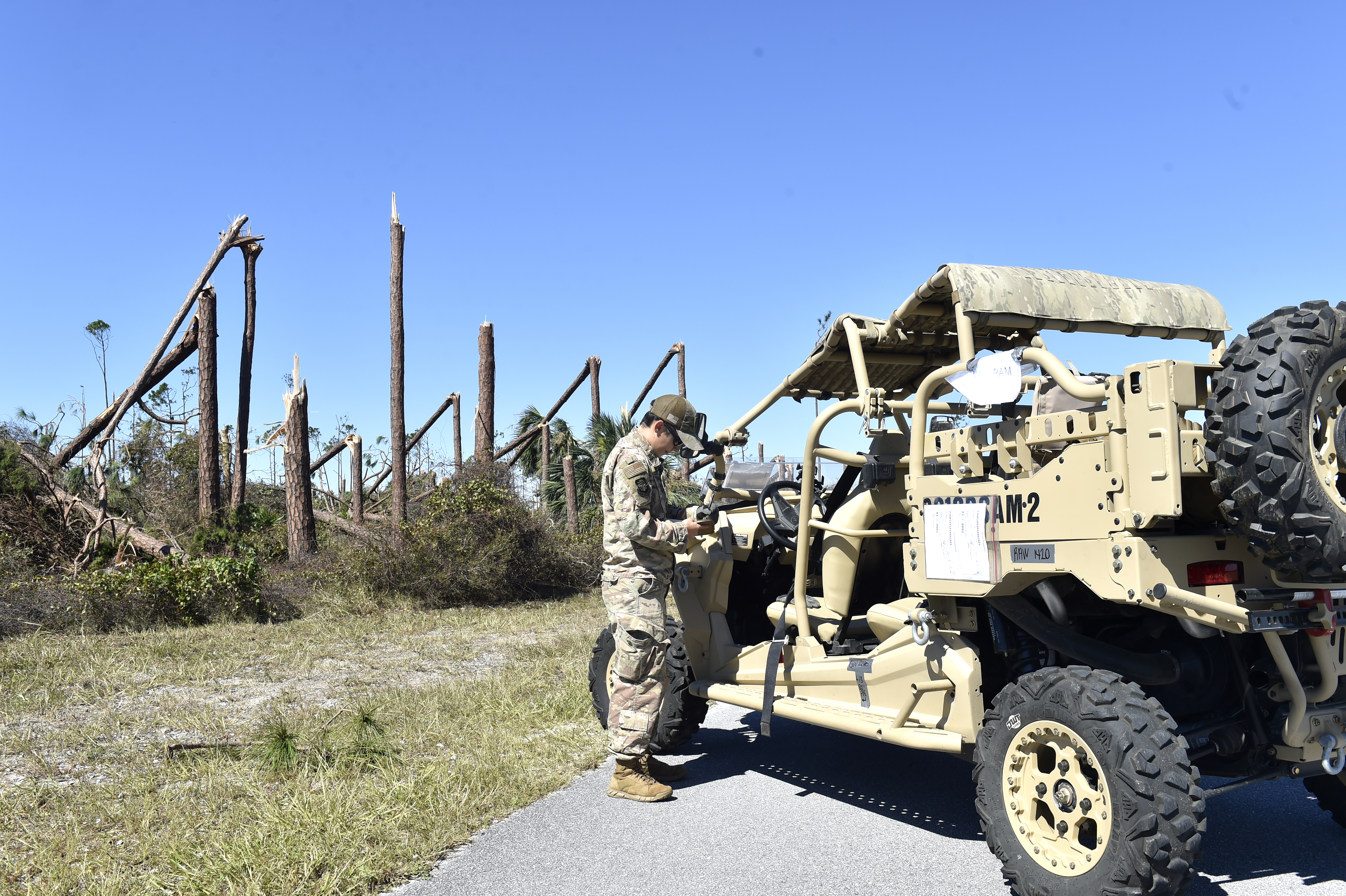
(U.S. Air Force photo by Tech. Sgt. Liliana Moreno)
Security forces Airmen with the 921st Contingency Response Squadron from Travis AFB, California, performed an initial security assessment of the base. The contingency response team deployed to assess damage and establish conditions for the re-initiation of airflow, bringing much-needed equipment, supplies and personnel for the rebuilding of the base in the aftermath of the storm.
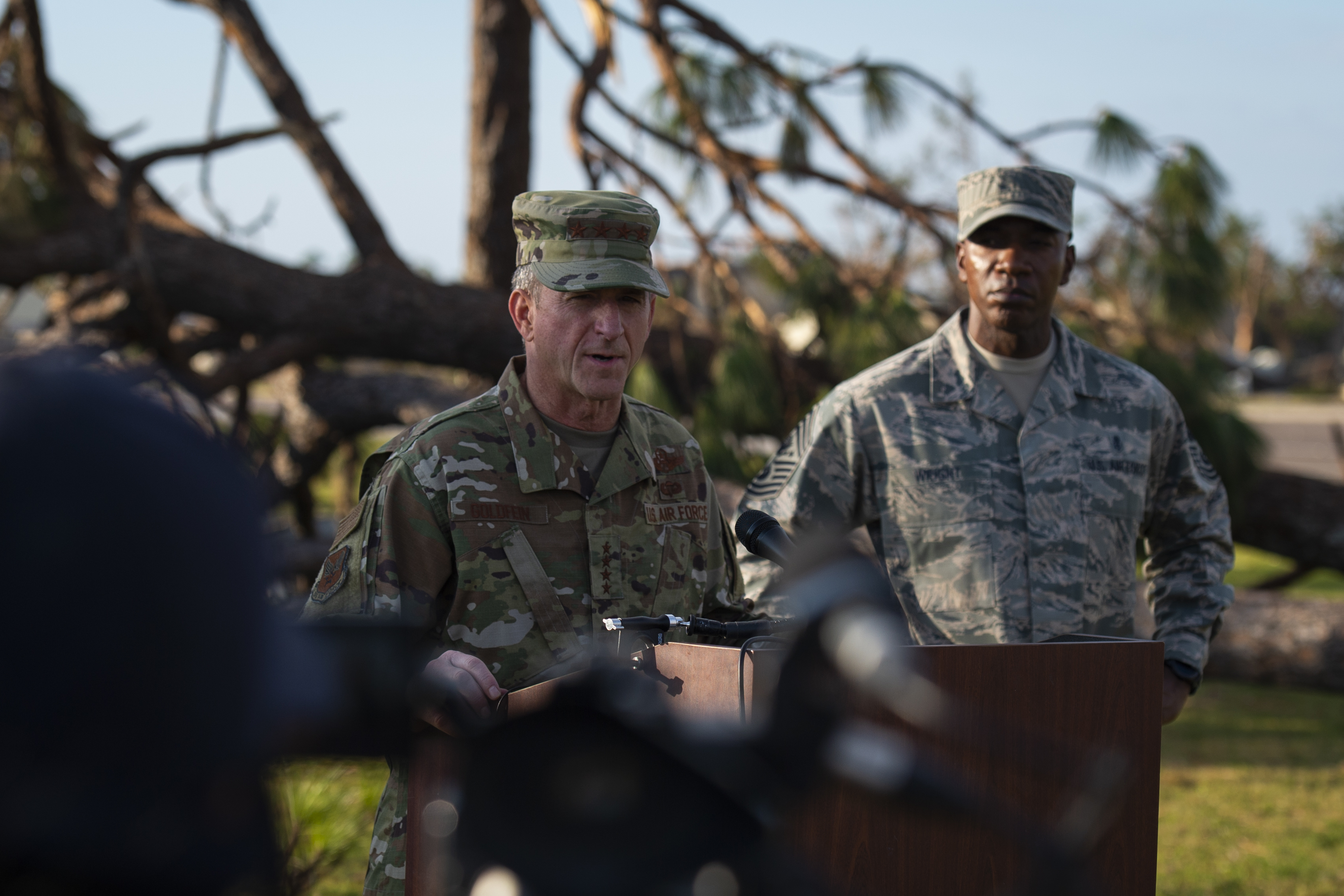
(U.S. Air Force photo by Senior Airman Joseph Pick)
Air Force senior leaders, including Chief of Staff of the Air Force Gen. David L. Goldfein and Chief Master Sergeant of the Air Force Kaleth O. Wright, toured Tyndall AFB to assess the damage from Hurricane Michael, one of the most intense tropical cyclones to ever hit the U.S.
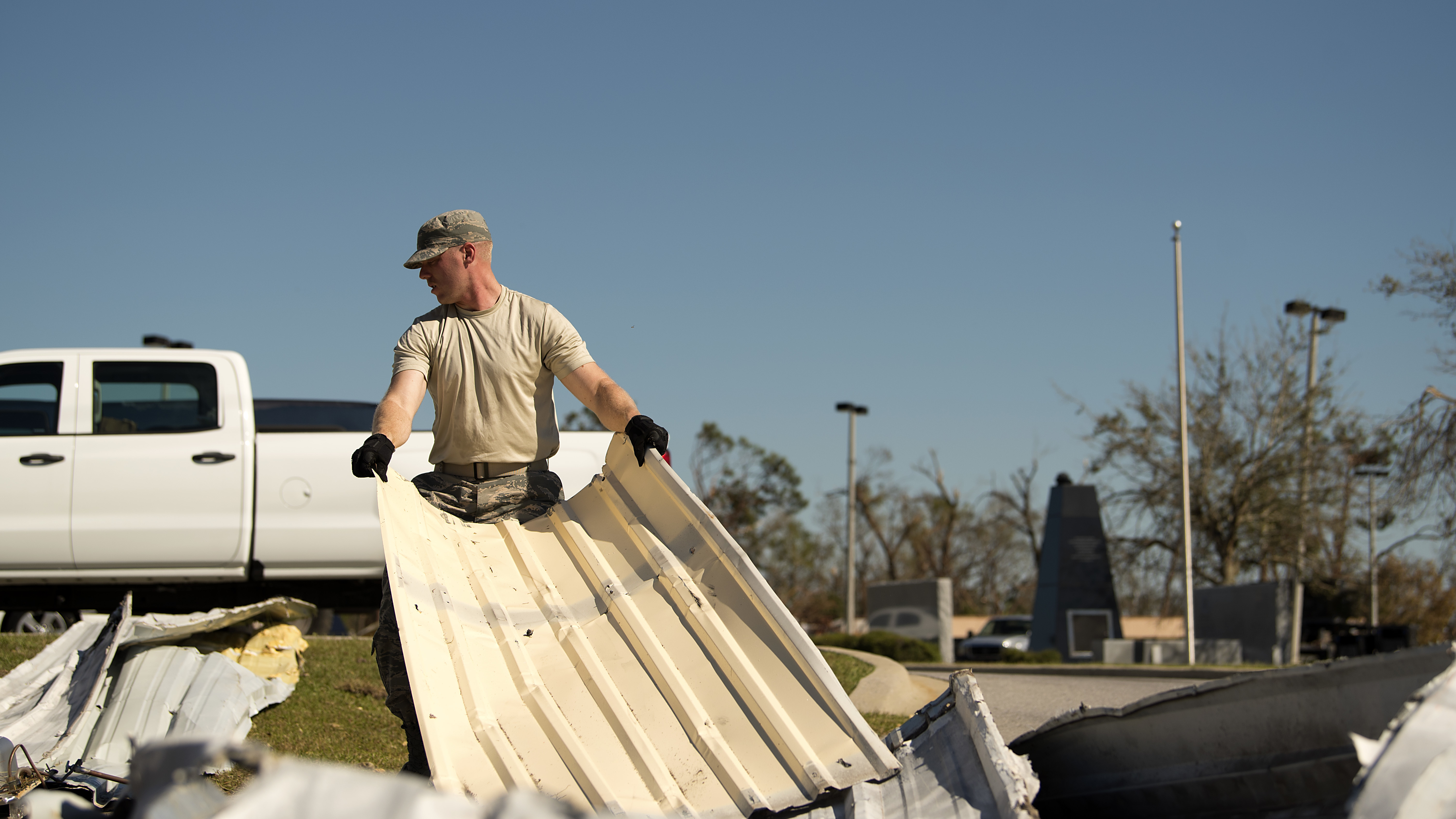
(U.S. Air Force photo by Airman 1st Class Caleb Nunez)
The 290th Joint Communications Support Squadron from MacDill Air Force Base, Florida, cleared rubble obstructing the roadway. With support from the Joint Communications Support Element of U.S. Transportation Command and MacDill's 6th Air Mobility Wing Force Support Squadron, the team was one of the first on the scene, clearing their own path to support the Bay County emergency operations center and enabling recovery efforts in Panama City.
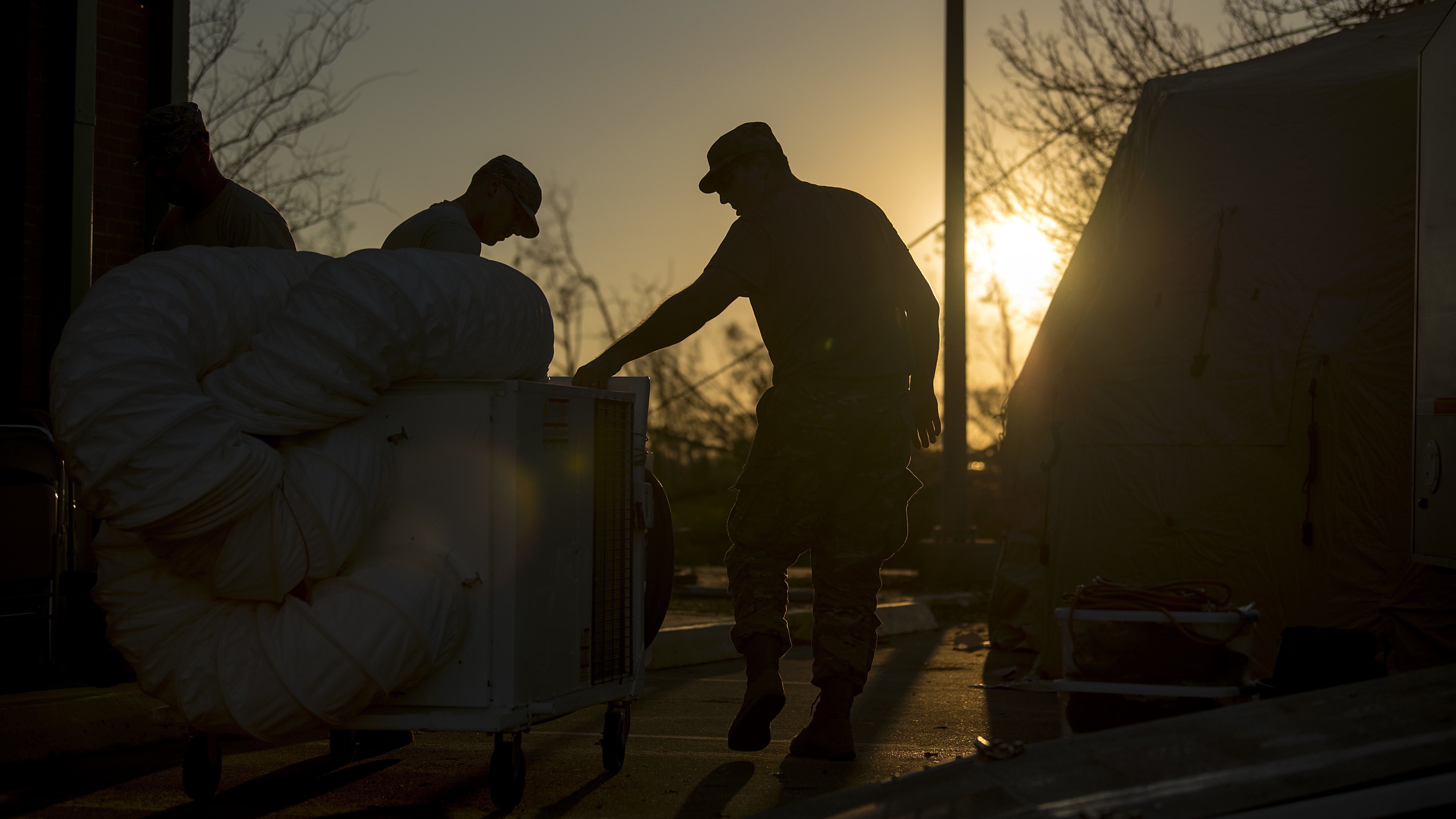
(U.S. Air Force photo by Airman 1st Class Caleb Nunez)
Airmen from the 290th JCSS worked around the clock throughout the panhandle providing communication services for the emergency operations centers of Bay, Jackson, Holmes, Washington and Liberty counties, supporting hundreds of first responders in the community.
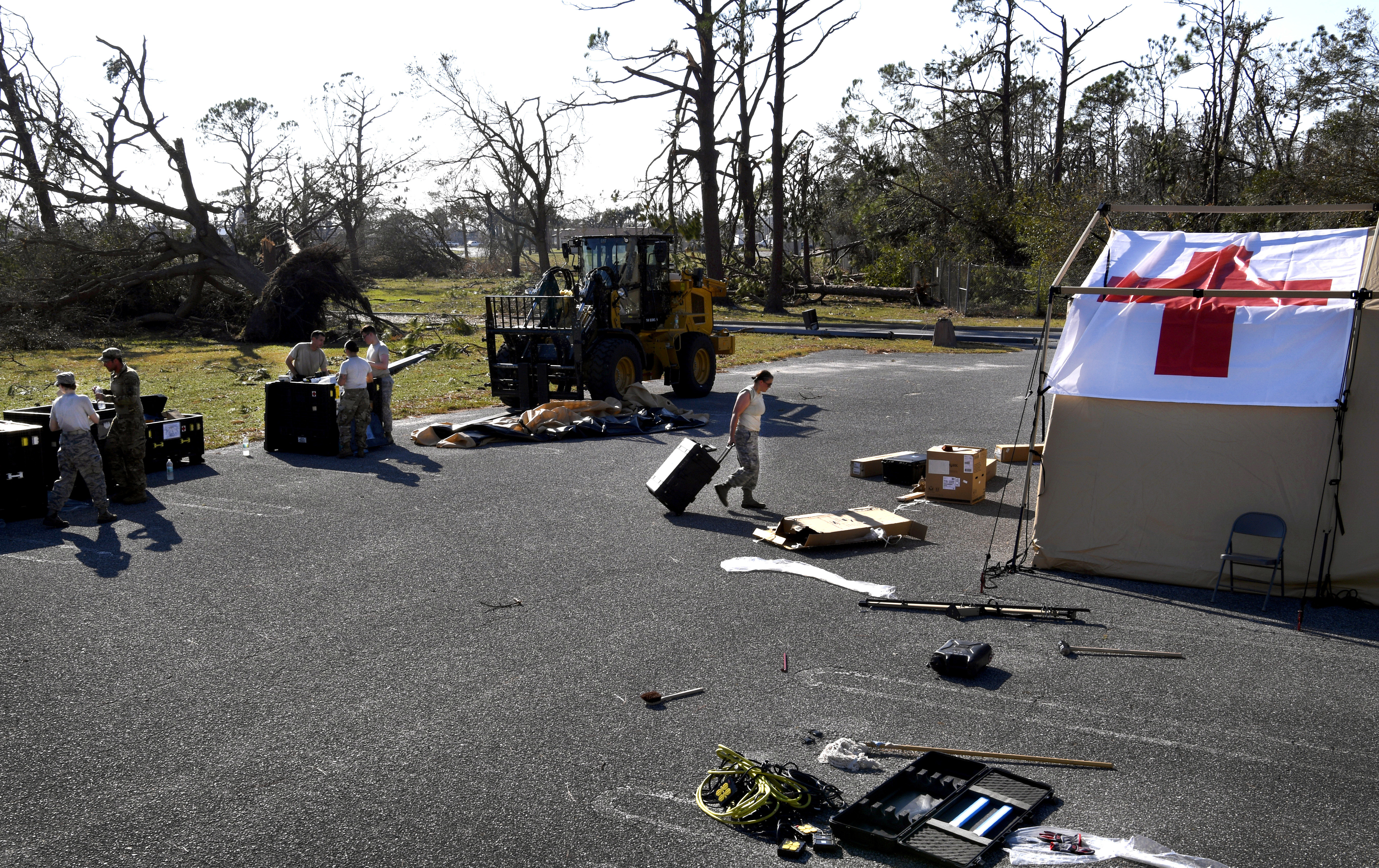
(U.S. Air Force photo by Staff Sgt. Matthew Lotz)
Medical technicians from the 96th Medical Group, Moody AFB, Georgia, arrived to support standing up an operational medical facility at the base.
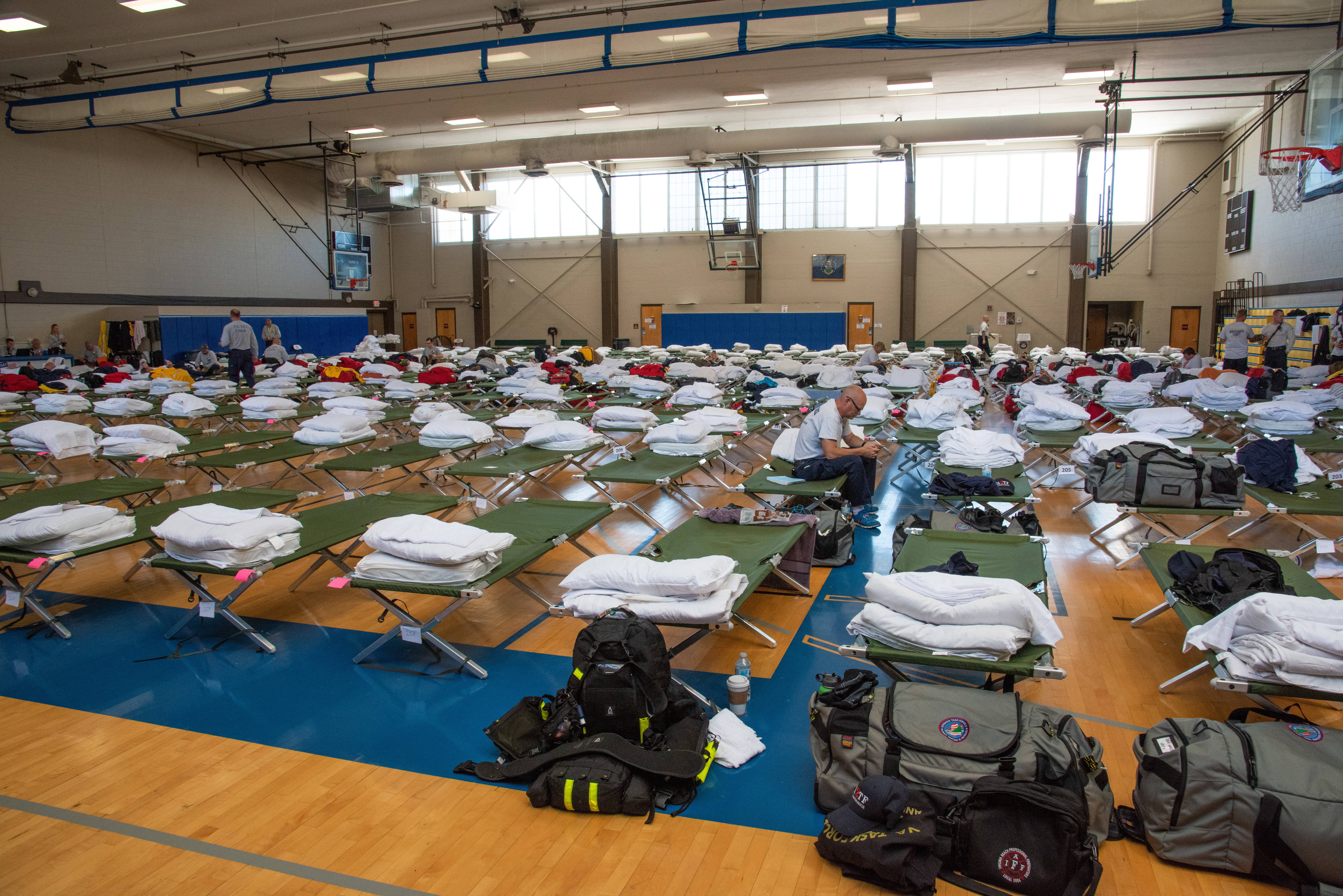 (U.S. Air Force photo by William Birchfield)
(U.S. Air Force photo by William Birchfield)
Maxwell AFB, Alabama, and Eglin AFB, Florida, are serving as Federal Emergency Management Agency staging areas hosting search and rescue personnel and distributing supplies and equipment to the Florida Panhandle. FEMA's Urban Search and Rescue teams and the Tennessee Task Force 1 deployed to Gulf Coast cities devastated by the hurricane.
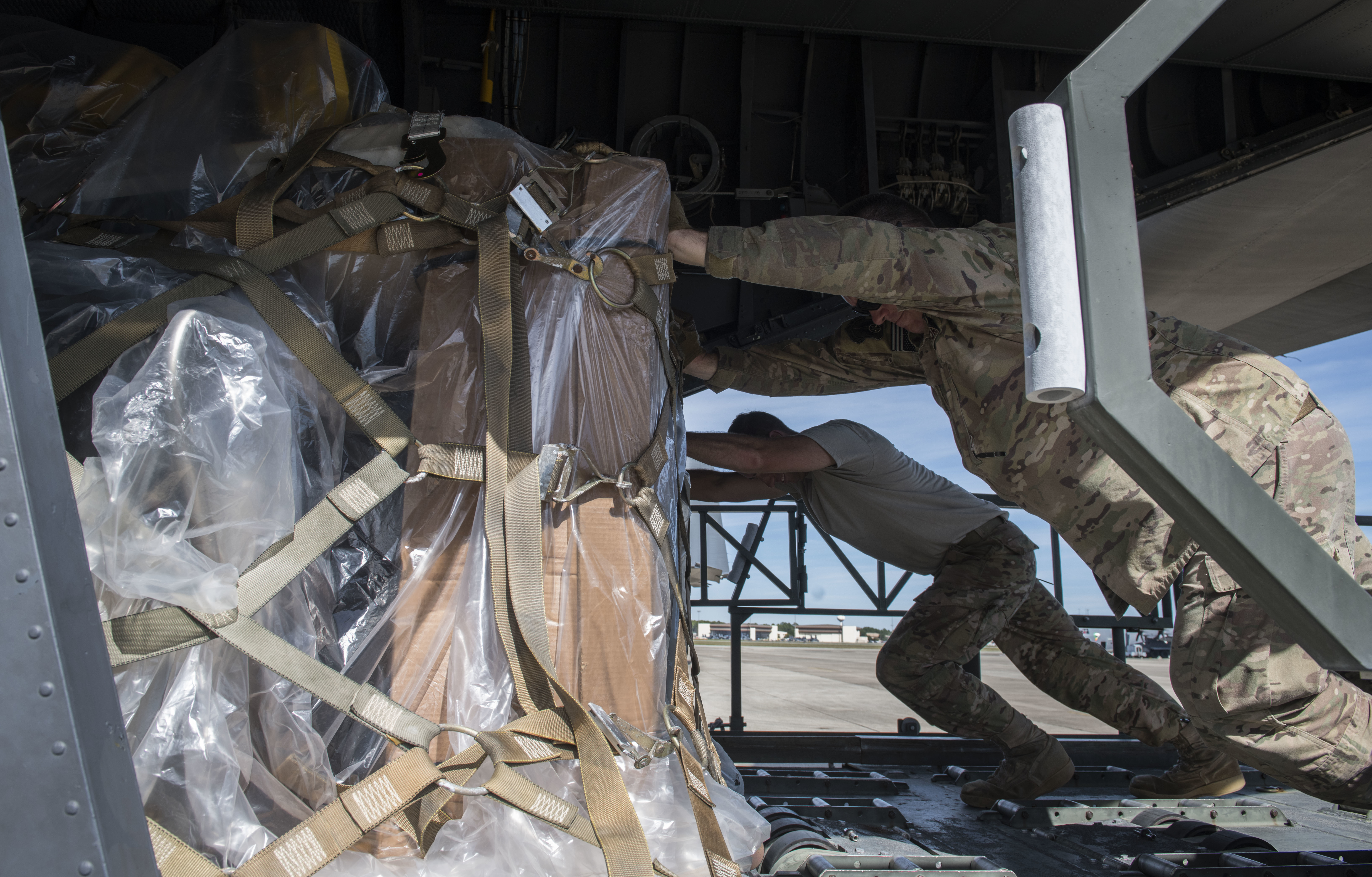
(U.S. Air Force photo by Senior Airman Rachel Yates)
15th Special Operations Squadron Air Commandos from Hurlburt AFB, Florida, transported supplies and a mobile kitchen that will be operated by Airmen assigned to the 823rd RED HORSE Squadron, also from Hurlburt, following the aftermath that left many in the panhandle without power and essential supplies.
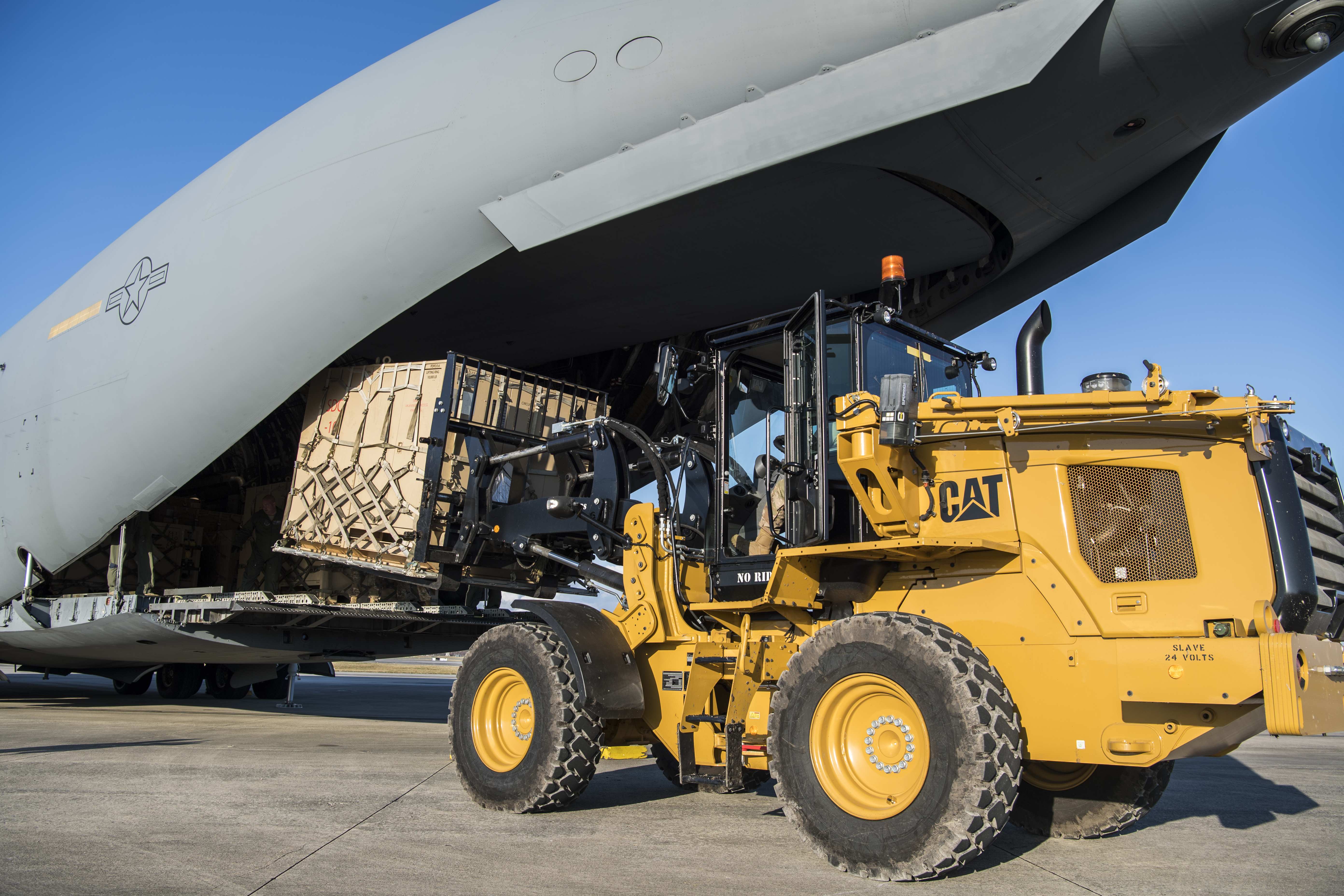
(U.S. Air Force photo by Senior Airman Keifer Bowes)
Air transportation specialists offloaded cargo in support of hurricane relief efforts. Multiple major commands mobilized relief assets in an effort to restore operations after the hurricane caused catastrophic damage to the base.
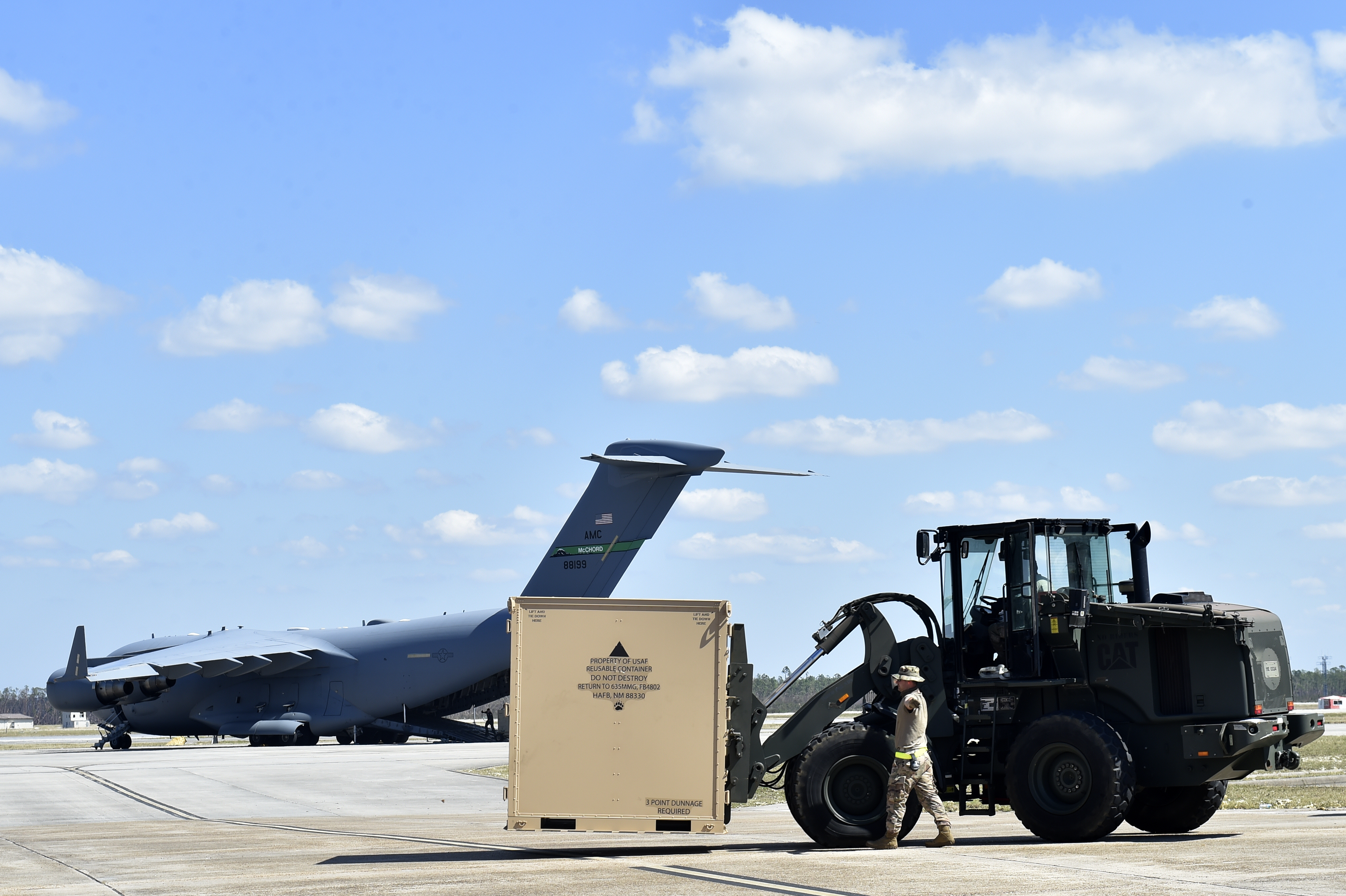
(U.S. Air Force photo by Tech. Sgt. Liliana Moreno)
Aerial porters with the 821st Contingency Response Squadron from Holloman AFB, New Mexico, positioned equipment in Tyndall AFB's cargo yard. The equipment is part of the Basic Expeditionary Airfield Resources unit that has the capability to restore and repair many Air Force assets, providing mission-ready equipment for global power and reach.

(U.S. Air National Guard photo by Staff Sgt. Carlynne DeVine)
Airmen from the 202nd RED HORSE Squadron from Camp Blanding, Florida, used backhoes to remove fallen trees in the Springfield area of Panama City, Florida.

(U.S. Air National Guard photo by Staff Sgt. Carlynne DeVine)
The 202nd RED HORSE Squadron from Camp Blanding, Florida, worked to clear roads for first responders. The squadron was called upon for their expertise in route clearing.
As Airmen and other service members from around the country, alongside federal agencies and volunteers, continue to focus on hurricane relief efforts, Airmen and families have been allowed access to the base to inspect the damage to their homes and collect their belongings. As they concentrate on necessary short-term recovery actions, Tyndall AFB leaders are also working to develop a long-term action plan.